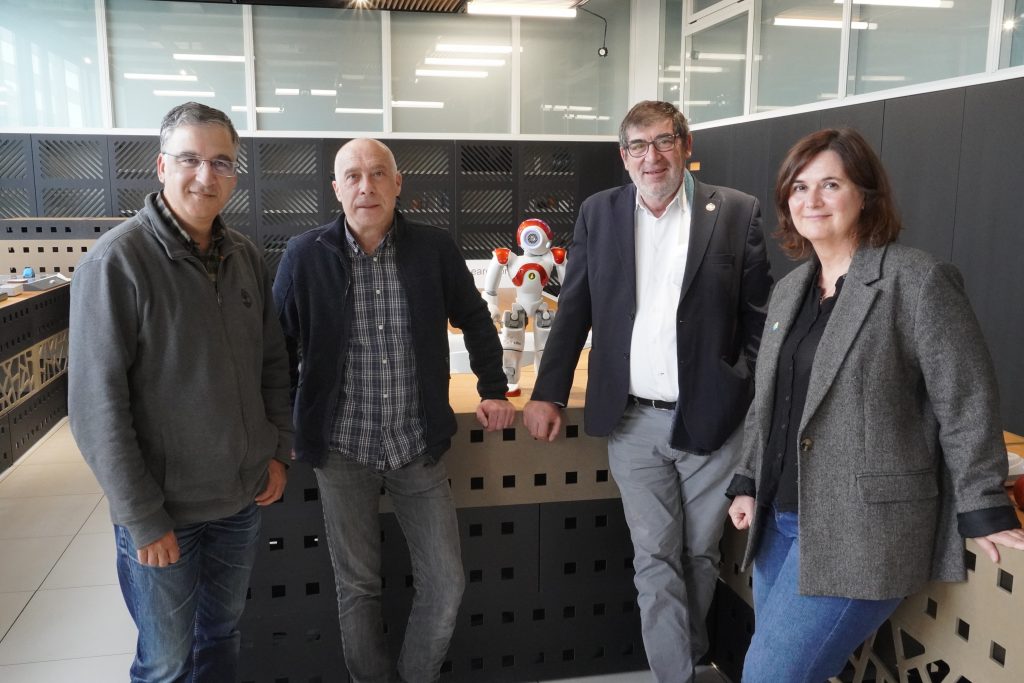
The CITIC of UDC and CSIC Join Forces to Advance AI in Exoplanet and Star Research
- Minia Manteiga, researcher at CITIC and president of the Spanish Astronomical Society, will lead the associated R&D&I unit at CSIC through the Institute of Astrophysics of Andalusia.
- This collaboration will strengthen the international projection of CITIC and UDC as leading institutions in artificial intelligence applied to astrophysics.
- Exoplanets, planets beyond the solar system, represent one of the major areas of study in astrophysics.
A Coruña, February 21, 2025.– The technological challenge of discovering exoplanets and developing new methods for their detection and analysis is one of the cutting-edge areas in modern astrophysics. The CITIC of UDC and CSIC, through the Institute of Astrophysics of Andalusia (IAA-CSIC), are joining forces to drive research and innovation in this field. This will be done through the unit “AIRExS: Artificial Intelligence for Research on Exoplanets and Stars” of the Universidade da Coruña, which has just been granted the status of an associated R&D&I unit of CSIC for a period of three years. This strategic collaboration enhances UDC’s research capabilities by integrating with CSIC’s network of scientific excellence.This partnership will allow the sharing of resources, infrastructure, and talent, fostering joint projects in priority research areas.
CITIC scientist Minia Manteiga will lead this unit, with participation from other researchers at UDC’s ICT Research Center, including José Carlos Dafonte, Manuel González Penedo, and Eduardo Mosqueira, as well as research support staff. On behalf of IAA-CSIC, the responsible scientist will be astrophysicist Cristina Rodríguez López, originally from Galicia.
Strengthening International Projection
The collaboration between CITIC and CSIC will advance artificial intelligence techniques, such as machine learning, to improve the detection and analysis of exoplanets. These advancements will enhance the precision of analyzing weak planetary eclipse signals and enable the re-examination of large datasets from missions like Kepler or Cheops using both supervised and unsupervised algorithms. CITIC’s expertise in handling data from the Gaia mission, combined with IAA-CSIC’s astrophysical knowledge, will improve the identification and characterization of the stars that give rise to planetary systems.
This agreement will also enhance the international visibility of CITIC and UDC, positioning them as leading institutions in artificial intelligence applied to astrophysics. Young researchers will have the opportunity to participate in international projects with ESA and NASA, working in prestigious and highly internationalized teams. Furthermore, students and professionals from UDC will gain hands-on training and career development opportunities in an interdisciplinary and global environment.
Minia Manteiga emphasizes this point, stating, “collaboration with CSIC is an excellent opportunity for our research group to take part in international projects focused on exoplanet detection, both from Earth and space. Additionally, it will enable UDC graduates in Computer Engineering, Data Science, and Artificial Intelligence to develop multidisciplinary research projects in high-level teams with a strong degree of internationalization”.
Expanding Knowledge of the Milky Way and the Universe
CITIC of the Universidade da Coruña is a key player in astrophysical research through its collaboration with international consortia involved in the Gaia and Euclid missions of the European Space Agency (ESA). The team, led by the Interdisciplinary Laboratory for Artificial Intelligence Applications, holds a leadership position in classifying and cataloging Milky Way stars using AI-based techniques. Their participation in Euclid focuses on analyzing infrared data collected by Euclid’s NISP-SPEC instrument to differentiate galaxies from other stellar objects.
Through the development of advanced artificial intelligence algorithms, CITIC significantly contributes to the characterization of cool stars and substellar objects, such as brown dwarfs and exoplanets, thereby expanding knowledge of the Milky Way and the universe. Their work complements the research conducted by other teams, solidifying the institution as a leading force in space research and the analysis of large-scale astronomical data.





